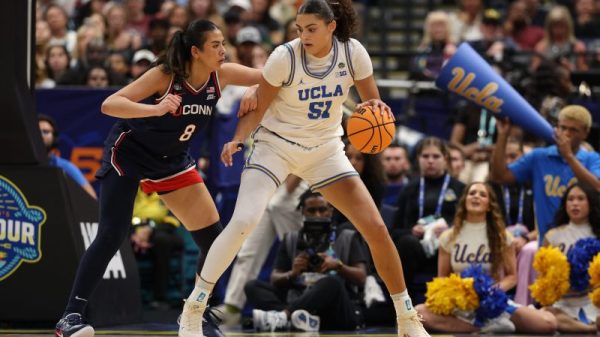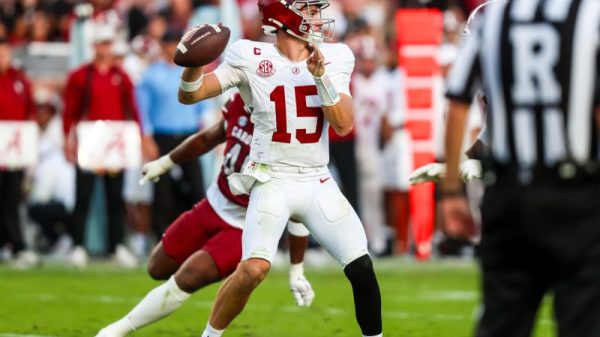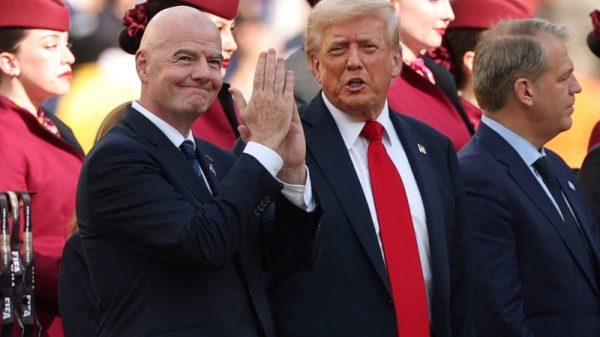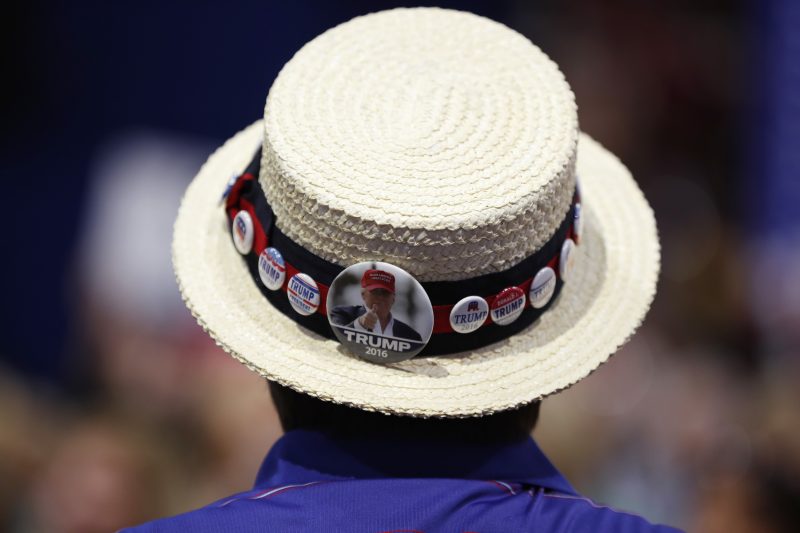We are now less than a year from the first Republican primary contests in the 2024 nominating cycle. In any other country, that very statement would seem odd; we’re considering the mechanics of elections that aren’t going to occur for nearly 12 months? But this is America so, yes, we are. Because American exceptionalism also manifests in hyperextended campaign seasons, thanks in part to people like me who start gaming things out 11 months in advance.
You’re welcome.
There is a reason for this particular discussion, though. The Republican field is starting to flesh out, with former president Donald Trump joined by a handful of other hopefuls, like former U.N. ambassador Nikki Haley. One potential candidate who hasn’t yet weighed in but almost certainly will is the guy who keeps finishing in second place in polls: Florida Gov. Ron DeSantis.
This is the point. We keep getting new polls showing Trump at or over 50 percent and DeSantis somewhere between 20 and 30 percent nationally. Everyone else is drifting around in the back, trailing both the front-runners and any individual poll’s “I’m not sure yet” option. So it seems like a fairly fluid field that might yield a close delegate chase as the 2024 convention approaches.
Except that this is the Republican Party, which engineers its primary contests to wrap things up quickly. And that might play to Trump’s advantage.
We saw this in 2016. Trump didn’t start winning state contests outright until about the point at which he’d already locked up the nomination. Because so many nominating contests in the Republican Party are winner-take-all or winner-take-most, though, he was able to build up a sizable delegate lead even without being the choice of a majority of voters.
The Green Papers is a site that tracks and presents the methods for party delegate allotments with great rigor. I used its state-level assessments to create the map below, which shows both how many delegates each state assigns (the size of the circle) and the way in which the delegates are awarded.
Notice that a lot of big states are winner-take-all, meaning that whoever gets the most votes, even if not 50 percent of the total, gets all the delegates. In Ohio, for example, the winner of the state vote gets all 78 delegates. (This is why former Ohio governor John Kasich landed in fourth place in the delegate count in 2016.) Other large states like Texas and New York are winner-take-most, with delegates being assigned to the winners of individual congressional districts. Since the statewide winner usually wins most congressional districts, too, the statewide winner usually gets the lion’s share of delegates from the state.
There are other ways in which the Republican system rewards the front-runners. You can see that some states on the map above have gray boxes in their backgrounds. Those are states that award delegates only to candidates who reach a certain threshold in voting. In Minnesota, for example, it’s 10 percent — so any candidate who gets under 10 percent gets no delegates at all. That means more delegates for better-performing candidates.
A Republican candidate needs 1,234 delegates to be the party’s nominee. There are 1,845 delegates to be won in just winner-takes-all and winner-takes-most states.
Granted, timing matters. DeSantis will probably get a tenth of the delegates he needs from Florida alone, which, depending on how the race looks when the state’s primary is held, could boost his campaign at a key moment or be too little, too late.
Florida is pretty early: March 19. So let’s consider just the first six days of voting, encompassing 24 contests. In them, there are 479 delegates awarded in winner-take-all states, 686 in winner-take-most (including six states with thresholds) and 219 in proportionately allocated contests. That’s 1,384 delegates alone.
The first two states are Iowa and New Hampshire, small states with few delegates. Trump lost Iowa narrowly in 2016 and won New Hampshire easily. We can assume he’ll get a big chunk of the 62 delegates at stake, particularly since New Hampshire has a 10 percent threshold.
Then comes Michigan and the first Super Tuesday, in which 13 states vote, 11 of them winner-take-most. One of those is Texas, with 162 delegates. There’s one winner-take-all: California, with 169 delegates. These are disparate states that are not going to uniformly prefer one candidate over another, it’s safe to say. But if Trump retains a clear national advantage by March 5, 2024, he can build a sizable lead on this day.
On March 12 and 19, there are another eight states that vote, including Florida. There are also 185 delegates at stake in Arizona, Illinois and Ohio, all winner-take-all states. Again, if Trump holds a hefty lead by March 19, he could get more winner-take-all delegates than DeSantis even after losing Florida.
The point here isn’t that this is going to happen. The point, instead, is that there is an incredibly narrow window for someone who isn’t a front-runner coming into the primaries and redirecting where the delegates land. If Trump and DeSantis are running 50-30 by early February, one of them is almost certainly going to be the nominee.
Again, Trump won the nomination in 2016 with less support in a stronger field. On Feb. 1, 2016, he was at about 36 percent in RealClearPolitics’s polling average, with Sen. Ted Cruz (R-Tex.) at 20 percent and Sen. Marco Rubio (R-Fla.) at 10 percent. That was where the top-three candidates landed in the final delegate count: Trump, Cruz, Rubio.
At this point, Trump is in a stronger position than he was in 2015. If that holds, the system is designed to reward him.



























